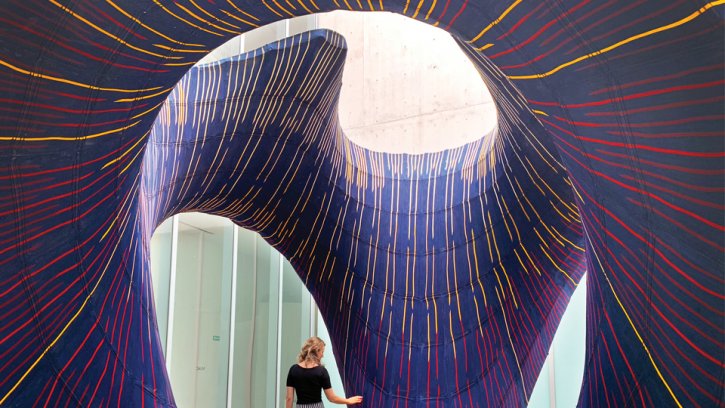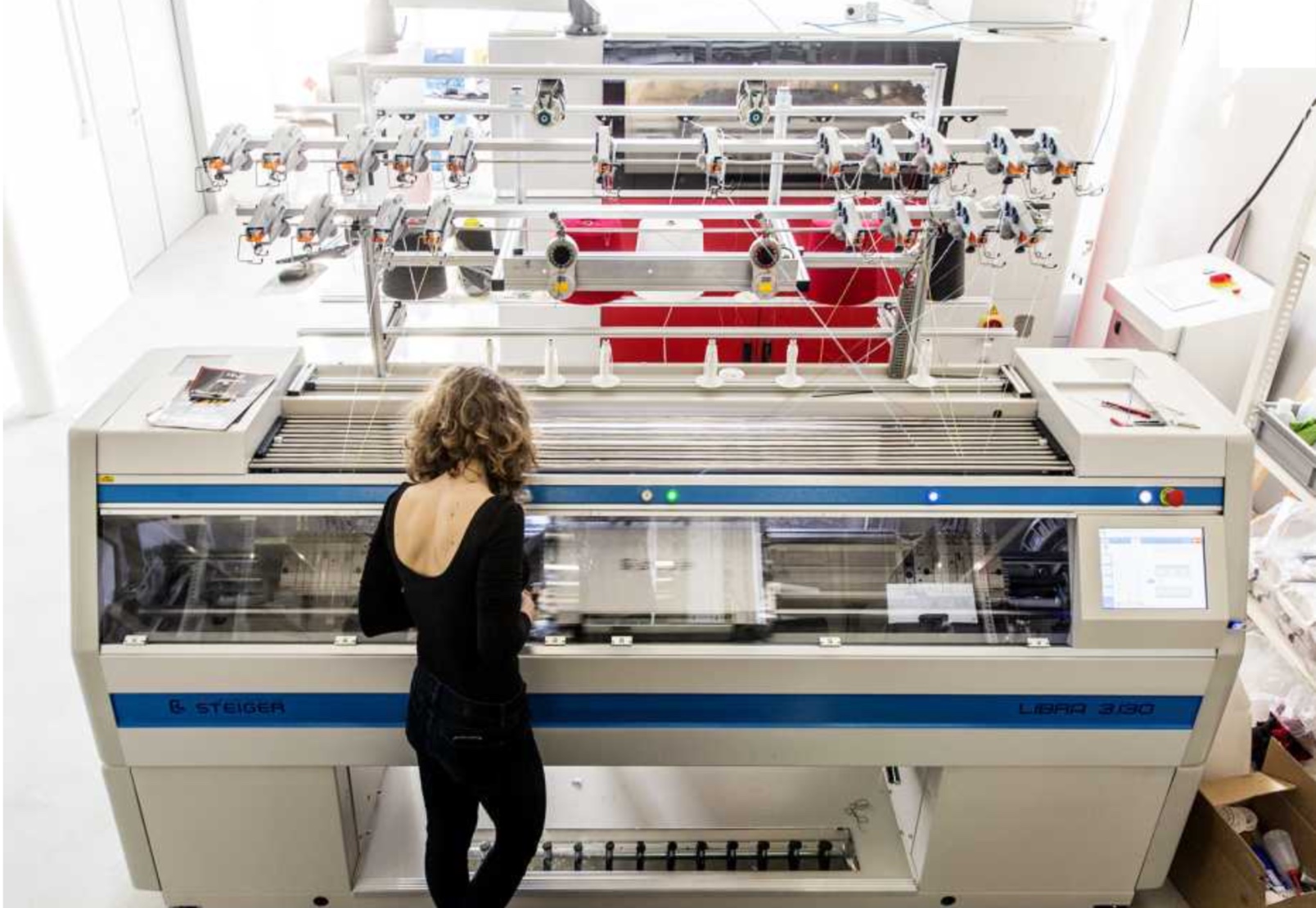
Knitted structure stars at Venice Biennale
The new technology is now being used to create a five-tonne concrete structure for an exhibition in Mexico City.

31st October 2018
Knitting Industry
|
Zurich
Researchers at ETH Zurich have 3D-knitted a structure on a computerised flat knitting machine that serves as the primary shaping element for curved concrete shells. The new technology is now being used to create a five-tonne concrete structure for an exhibition in Mexico City.
The heart of the four-metre-tall curved concrete shell is knitted - the structure’s formwork is a knitted textile supported by a steel cable-net. The prototype KnitCandela is thought to be the first time that this technology is being used on an architectural scale. The structure is a tribute to Spanish-Mexican architect Felix Candela (1910–1997) and a collaboration with Zaha Hadid Architects Computation and Design Group (ZHCODE), and Architecture Extrapolated (R-Ex).
Photograph: Philippe Block
55-kilogram formwork for 5 tonnes of concrete
The technology developed at ETH Zurich involves taking a digitally generated pattern and using an advanced Steiger LIBRA 1.130 flat knitting machine to produce the shuttering of the formwork for the shell structure - in 36 hours, the machine knitted a fully shaped, double-layered 3D fabric consisting of four long strips.
The lower layer forms the visible ceiling – a designed surface with a colourful pattern. The upper layer contains sleeves for the cables of the formwork system and pockets for simple balloons, which, after the entire structure is coated in concrete, become hollow spaces that help save on materials and on weight. Manufacturing a formwork for such a geometrically complex structure using conventional methods would cost substantially more in both time and material, the researchers say.
The formwork is made of a knitted textile: KnitCandela. (Video: ETH Zurich / Block Research Group)
KnitCandela
Meanwhile on location in Mexico, in the museum’s inner courtyard, the knitted formwork was tensioned between a temporary boundary frame and sprayed with a specially formulated cement mixture. This initial layer was just a few millimetres thick, but sufficient to create a rigid mould; once it hardened, conventional fibre-reinforced concrete was applied.
The knitted fabric was flown to Mexico City inside two suitcases - as normal checked-in baggage on a normal flight. The knitted fabric weighs only 25 kgs. and the cable net around 30 kgs. Taut in between the boundary frame, they supported over 5 tonnes of concrete curves.
Knitting is the new 3D printing
The technology behind KnitCandela was developed by Mariana Popescu and Lex Reiter as part of Switzerland’s National Centre of Competence in Research (NCCR) in Digital Fabrication research project. Mariana Popescu is a doctoral student with Philippe Block, Professor of Architecture and Structure at ETH Zurich, while doctoral student Lex Reiter studies with Robert Flatt, Professor of Physical Chemistry of Building Materials.

Photograph: Lex Reiter
Popescu’s research shows that employing knitted textiles in architectural applications cuts down on material, labour and waste, and simplifies the construction process for complex shapes. Matthias Rippmann, project manager for KnitCandela and senior researcher in the Block Research Group, says: “It took only five weeks from the initial work until completion – much less time than if we were using conventional technology.”
KnitCandela also represents an evolution of the flexible forming system developed for the HiLo roof: a doubly curved, thin-shell concrete structure the Block Research Group developed for Empa’s research and innovation building NEST in 2017. For KnitCandela, the ETH researchers produced the knitted shell in one go, whereas HiLo’s shell was made of a network of steel cables and a sewn textile.
Popescu says: “Knitting offers a key advantage that we no longer need to create 3D shapes by assembling various parts. With the right knitting pattern, we can produce a flexible formwork for any and all kinds of shell structures, pockets and channels just by pressing a button.”
For the construction industry, 3D printing is a major topic. Philippe Block says that, to a certain extent, his group’s pioneering method is a new form of 3D printing, “only it doesn’t require a completely new kind of machine. A conventional knitting machine will do just fine.”

Business intelligence for the fibre, textiles and apparel industries: technologies, innovations, markets, investments, trade policy, sourcing, strategy...
Find out more